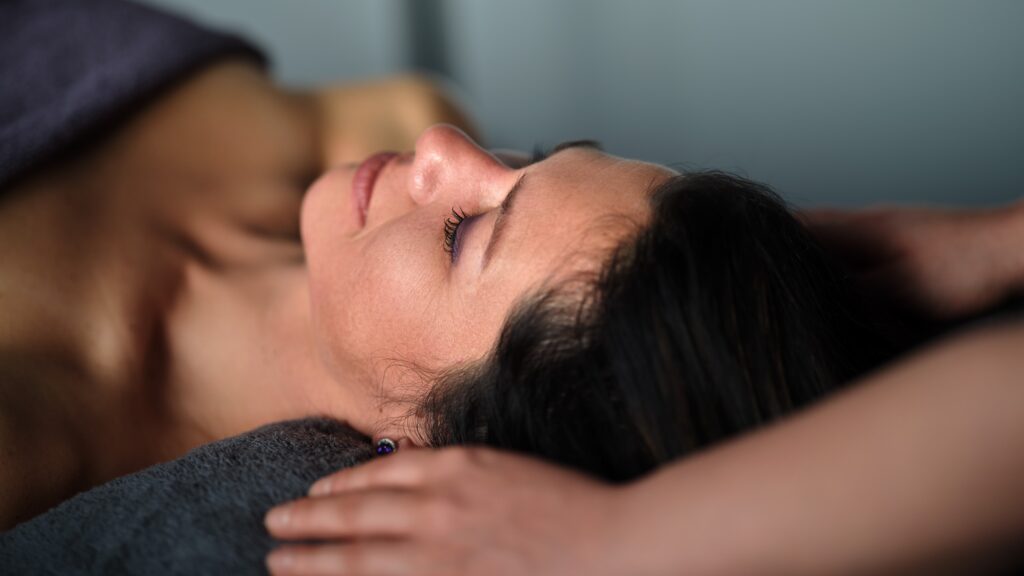Experiencing tiredness, insomnia, hormonal imbalances, frequent infections, or post-surgery swelling? Lymphatic massage is a powerful technique that can aid in your recovery, whether you’re looking to enhance immunity, alleviate stress, boost energy levels, or support natural healing processes.
Many individuals notice significant improvements after just one treatment, providing a refreshing reset for the body. This article explores how Manual Lymphatic Drainage (MLD) specifically aids in recovery after surgery, both medical and cosmetic, and highlights its vital role in healing.

Why Swelling & Fluid Retention Happen After Surgery
Surgery shocks the body, involving cutting and alteration of tissues, prompting immediate healing processes. Following procedures like liposuction, breast augmentation, or knee surgery, the body produces extra fluid and white blood cells to assist recovery and combat infection. This excess fluid often leads to swelling, which is a natural response to physical trauma. Our body is fascinating; it just knows what to do!
Your lymphatic system works harder post-surgery, and lymph nodes near the scar may be swollen. While swelling occurs for a beneficial reason, it can take weeks or months to subside, causing discomfort and potentially delaying healing.
This is where Lymphatic Drainage Massage shines, helping the body heal more quickly and gently.
How Lymphatic Massage Helps with Recovery
MLD involves gentle, rhythmic, and repetitive movements that enhance fluid drainage and reduce swelling after surgery. Various techniques are used to feel, grab, and guide lymph fluid toward the heart while it passes through your lymph nodes. During the session, the surrounding areas and non-affected sites are cleared first. Imagine the lymphatic system as a series of traffic lights: even if the last car in line gets a green light, the jam must first be resolved to allow the rest to proceed smoothly. Similarly, your therapist ensures that excess fluid can drain properly before addressing the affected area.
The treatment focuses on more than just draining excess fluid; it significantly benefits the skin by reducing inflammation and improving texture and tone. It is particularly effective on scar tissue, promoting cell regeneration to enhance the healing appearance. Additionally, it helps prevent complications such as fibrosis— hard lumps under the skin from excessive tissue deposition—and keloids— hardened scar tissue resulting from overproduction of collagen during healing.
What’s remarkable about lymphatic drainage is its gentle approach: it supports the body’s natural drainage system rather than forcing anything.
How Many Sessions Do You Need?
The timing of treatment post-surgery depends on the procedure. Generally, lymphatic drainage massage can begin a few weeks after surgery, once the scar has healed, scabs have fallen off, and all staples or stitches have been removed. Always follow your surgeon’s recommendations.
The frequency of treatments varies based on the type of surgery. For optimal results, it is recommended to have 2–3 sessions per week during the first two weeks. After this initial period, one session per week is suggested until full recovery.
Real Results: Faster Healing & Better Cosmetic Outcomes
Lymphatic Drainage Massage shows impressive results, especially among individuals recovering from surgery. Hear from two of our clients who experienced the benefits firsthand:
Molly’s Experience:
“After my knee surgery, I faced swelling and stiffness that hampered recovery. A friend recommended lymphatic drainage massage, and I’m so glad I tried it! The sessions were gentle yet effective. After a few treatments, I noticed significant inflammation reduction and improved mobility. My scar tissue is healing well—this massage truly expedited my recovery!” (Molly started treatments four weeks post-surgery.)
Alice’s Experience:
“Following my tummy tuck, I dealt with tightness and swelling. Lymphatic drainage massage made an incredible difference — within a few sessions, I felt lighter, and my discomfort diminished. I believe it made my recovery smoother and improved my surgical outcomes!” (Alice began her sessions two weeks post-surgery.)
Incorporating MLD into your post-surgery care can enhance your recovery process. No wonder why many surgeons recommend this non-invasive treatment — research shows it significantly improves cosmetic outcomes when incorporated into post-operative care.
Final Thoughts: Harnessing The Power of Your Lymphatic System
Lymphatic massage is not just a luxury to indulge in occasionally; it serves multiple beneficial purposes, providing a non-intrusive way to heal from within.
While receiving a course of treatments is aiding your recovery significantly, there are additional steps you can take to accelerate your recovery between sessions:
- Stay hydrated: Drinking plenty of water replenishes fluid levels in your body.
- Engage in gentle exercise: The lymphatic system relies on muscle contractions to facilitate movement, so light activity is essential.
- Incorporate dry brushing and gentle stroking: Your therapist can teach you simple home techniques like dry brushing toward your heart or gentle strokes. Repeat these movements up to five times for added massage benefits.
- Avoid stimulants during your healing process: Excess salt, caffeine, and added sugar can hinder your recovery and reduce the efficiency of your body’s systems.
- Prioritise rest and sleep: Adequate and quality sleep is a powerful asset in your recovery process.
Have you recently undergone surgery and are feeling sluggish or swollen? Are you interested in supporting your body for a quicker recovery? Don’t miss out on this gentle yet effective method to boost your health—book your post-surgery lymphatic massage today!
